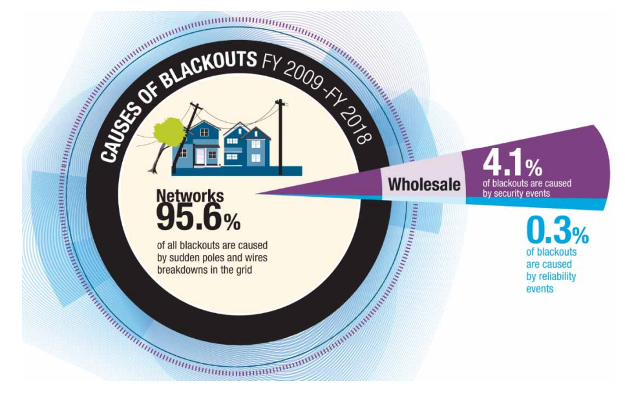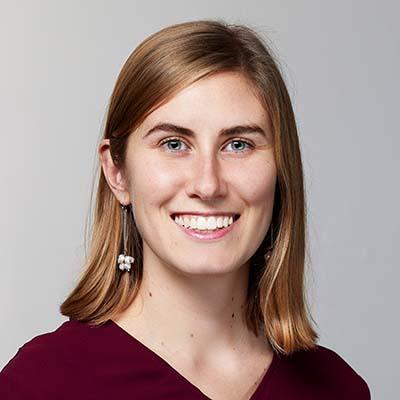Australia's Interim Reliability Measure and the ESOO

Key Findings
The Australian Energy Market Operator (AEMO) is expected to release its next Electricity Statement of Opportunities (ESOO) tomorrow.
The inclusion of the Interim Reliability Measure (IRM) in the ESOO reporting may skew the resultant coverage towards alarmist headlines. It is important for the public to be wary of such coverage.
The ongoing use of the IRM is not supported by the majority of stakeholders, including energy consumers, retailers and producers, raising questions around its potential use in reporting or decision-making.
The Australian Energy Market Operator (AEMO) is expected to release its next Electricity Statement of Opportunities (ESOO) tomorrow.
The ESOO reports on whether or not each region in the National Electricity Market (NEM) is likely to meet what is known as the ‘Reliability Standard’, and the amount of additional energy supply required to stay within that standard.
In addition, the potential extension of another, far stricter measure of reliability known as the ‘Interim Reliability Measure’ (IRM) – and its use in the ESOO reporting alongside the Reliability Standard – might prove to skew coverage towards alarmist headlines.
Yet it is important for the public to appreciate that the ongoing use of the IRM for assessing power supply adequacy is onerous and has not been supported by the majority of stakeholders, including energy consumers, retailers and producers – raising questions around its potential use in reporting or decision-making.
How does the reliability standard work?
The chart below shows the causes of blackouts across the NEM from FY2009 to FY2018. The majority– 95.6% – were caused by breakdowns in electricity networks (the poles and wires); for example when a power pole is knocked down in a storm. These usually affect a small number of customers. A further 4.1% were due to ‘system security events’ caused by disruption in voltage and frequency balance, such as generators breaking down or transmission lines failing. The remainder – 0.3% of events – were caused by “reliability events” – situations in which there is not enough capacity (generation, demand response and interstate transmission) to meet demand.

Source: AEMC
The Reliability Standard is focused only on this small fraction of power shortfalls. It sets an upper yearly limit on the amount of forecast energy demand that is not met by generation assets, demand response and interstate transmission lines. The Reliability Standard calls for a maximum of 0.002% expected Unserved Energy (USE) in each region each year – meaning that over a whole year, 99.998% of forecast customer demand is to be met in a given region.
If supply cannot meet demand, load shedding occurs. This has been uncommon, with only five instances of load shedding in the NEM related to reliability since 2005.
It is important to emphasise that the Reliability Standard as currently defined sets a very high bar for reliability. If electricity load was distributed equally across time then a unserved energy standard of 0.002% implies that on average no household or business can go without electricity for any longer than about 10.5 minutes per year (0.002% multiplied by the total minutes in a year).
In reality the standard tolerates an even shorter outage duration because electricity load tends to be higher when supply shortfalls are likely. If all the unserved energy (0.002% of the annual demand of say 188.4TWh in 2022-23) occurred while the NEM was at peak demand (say 32,569MW in 2022-23), this would indicate seven minutes of outages across the NEM.
Unserved energy has only been above 0.002% in two regions in the past 15 years (Victoria and South Australia back in 2008-09).
Actual Unserved Energy by NEM Region
![]()
Source: Reliability Panel AEMC
What about the Interim Reliability Measure?
The IRM aims to keep unserved energy to a vastly tighter standard – aiming for only 0.0006% unserved energy in each region in a given year. The amount of unserved energy indicated by the IRM would imply maximum of 2-3 minutes of outage across the NEM (the lower limit being if USE happened at NEM 2022-23 peak demand, and the upper limit indicated by 0.0006% of the minutes in the year).
Energy ministers adopted this measure several years ago on the understanding it would be temporary (hence the word “interim”). The IRM aims to enhance reliability by operating as a trigger for two market mechanisms: the ‘Interim Reliability Reserve’ (IRR), which is an out-of-market capacity reserve; and the ‘Retailer Reliability Obligation’ (RRO), which encourages retailers to enter contracts with generators to fulfil energy demand.
The extension of the IRM
The Australian Energy Market Commission (AEMC) recently recommended that the IRM of 0.0006% unserved energy be extended to 2028. In July, the AEMC published a draft rule to extend the application of the IRM to the RRO from 1 July 2025 to 30 June 2028. Ministers have already decided to extend the use of the IRM for the IRR to 2028.
Extending the IRM does not appear to line up with the existing evidence base surrounding it. The Reliability Panel’s review of the Reliability Standard and settings found: “The IRM, at 0.0006% expected USE, is significantly tighter than a level of reliability consistent with consumers’ willingness to pay for reliability.”
Further, on reviewing the first round of stakeholder submissions on the AEMC’s draft recommendation to extend the application of the IRM to the RRO to 2028, IEEFA finds there was not broad support for the extension. For example, the Australian Energy Council (AEC) “remains unconvinced that the IRM has led to any benefits”.
The AEMC points out in the following draft rule determination that: “Of the eight [submissions], two supported the draft recommendation, five did not support and one was neutral on the need for the IRM.”
IEEFA’s review of the second round of submissions to the AEMC draft rule determination (the next stage of the rule change process) suggests no energy producer or consumer stakeholders were supportive, with just one stakeholder – AEMO – supporting its extension.
Despite limited stakeholder support, the AEMC has proposed fast-tracking the draft rule noting that “adequate consultation with the public was carried out”.
Due to the potential extension, the IRM will likely be continued to be used in some form in ESOO reporting.
However, the IRM should not be used to make major decisions around energy supply – as there does not appear to be sufficient evidence that it is in the long-term interests of consumers, nor is there stakeholder support for its extension.
The Reliability Standard – the existing, accepted standard for the NEM, recommended by the Reliability Panel to be retained – should be the main target in the ESOO reporting, and the main goal for decision-makers and energy market planners.















